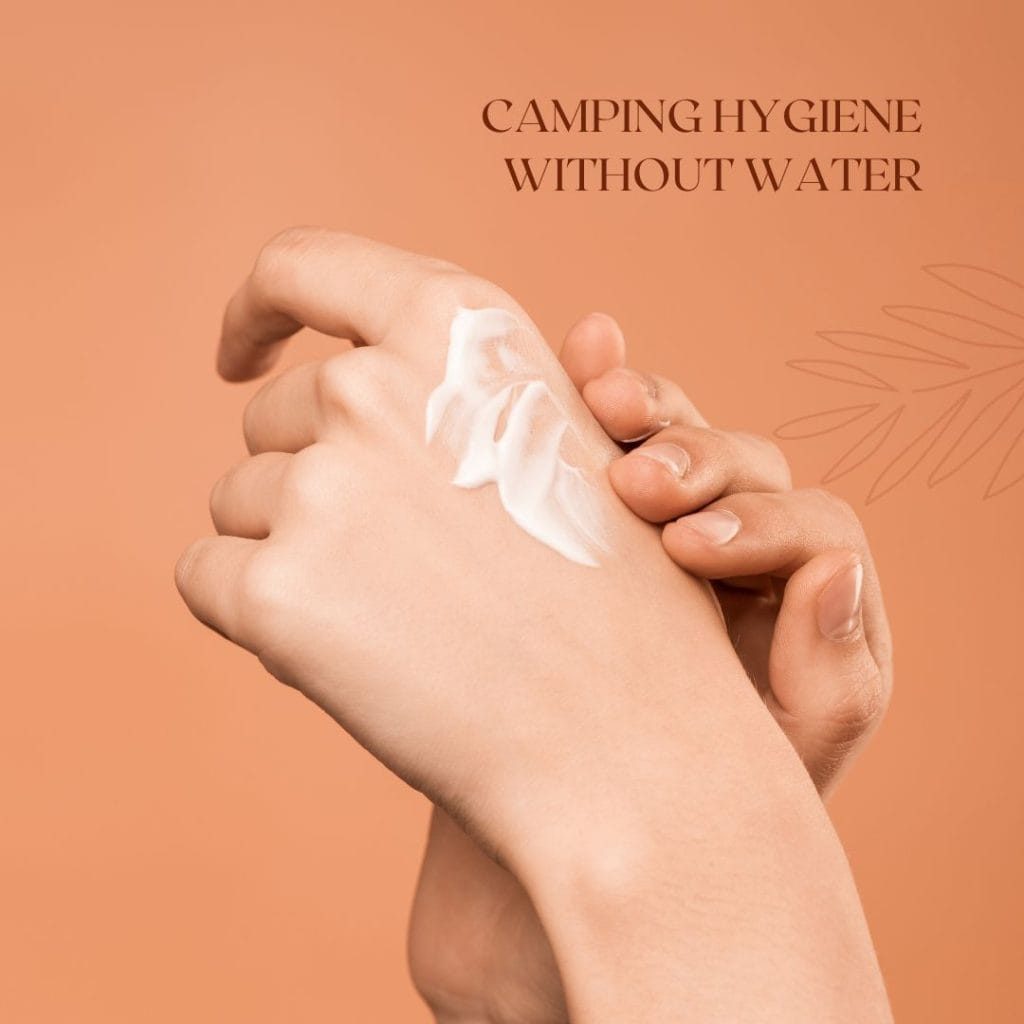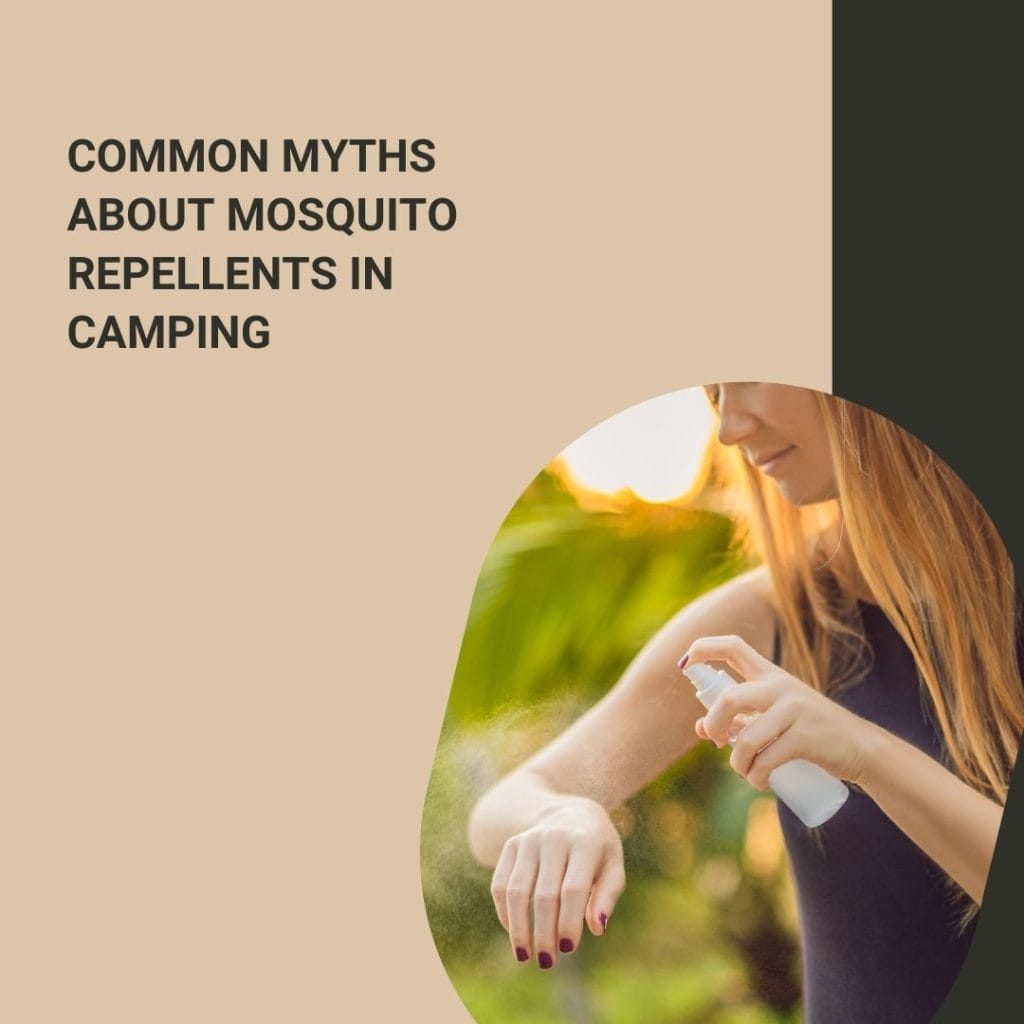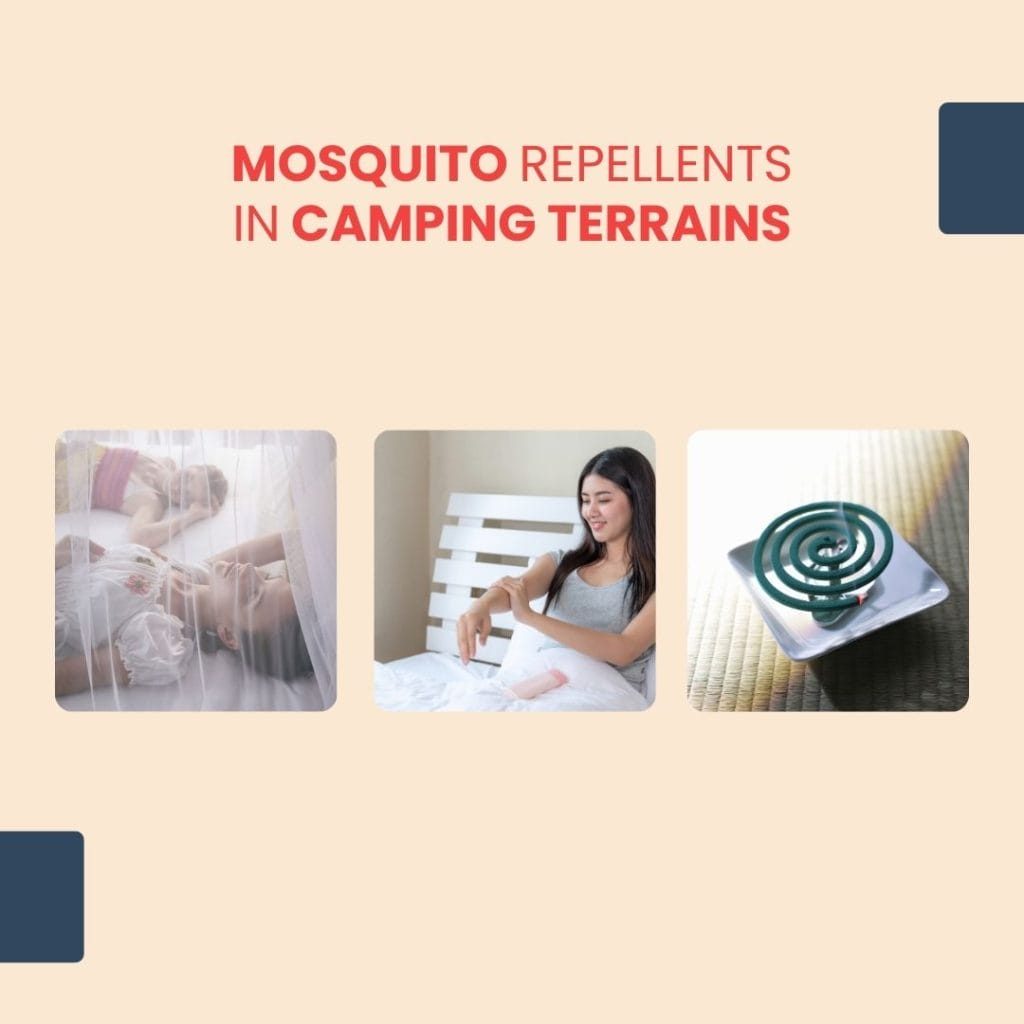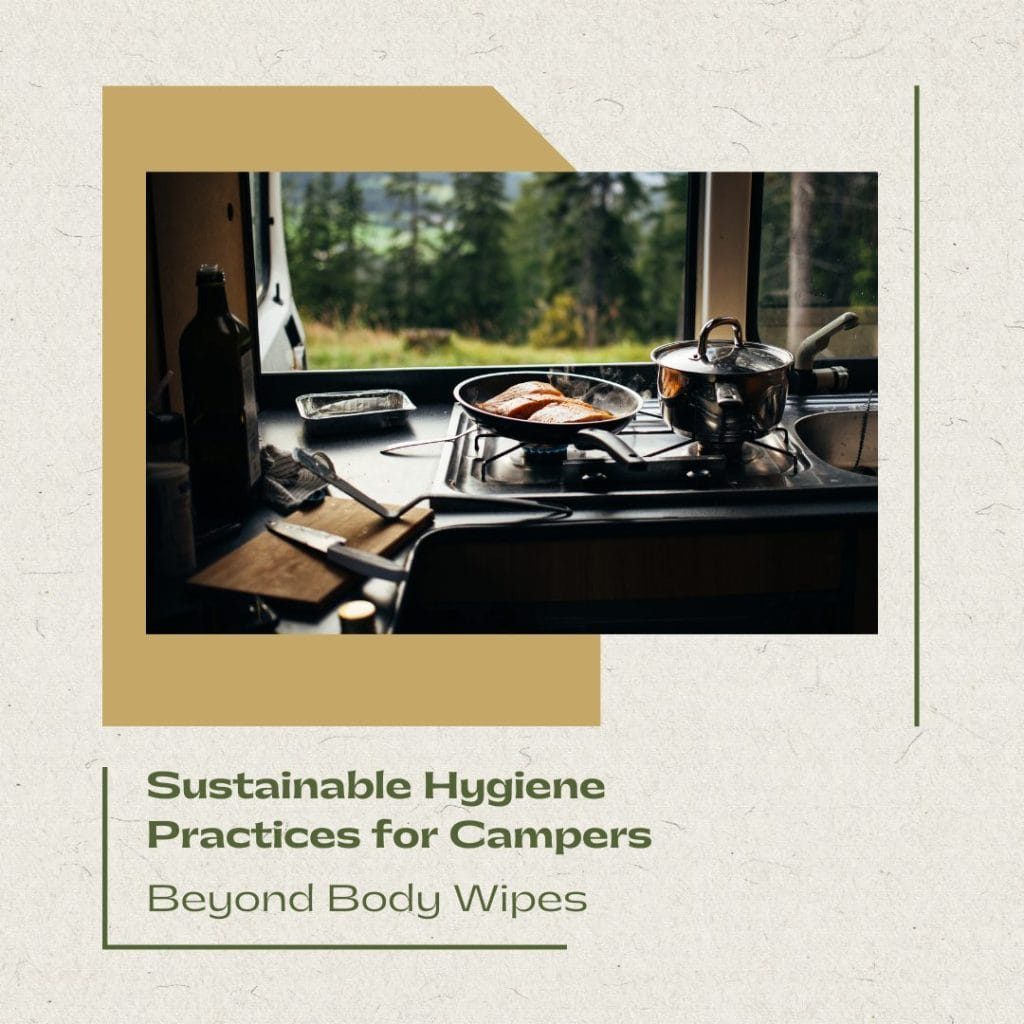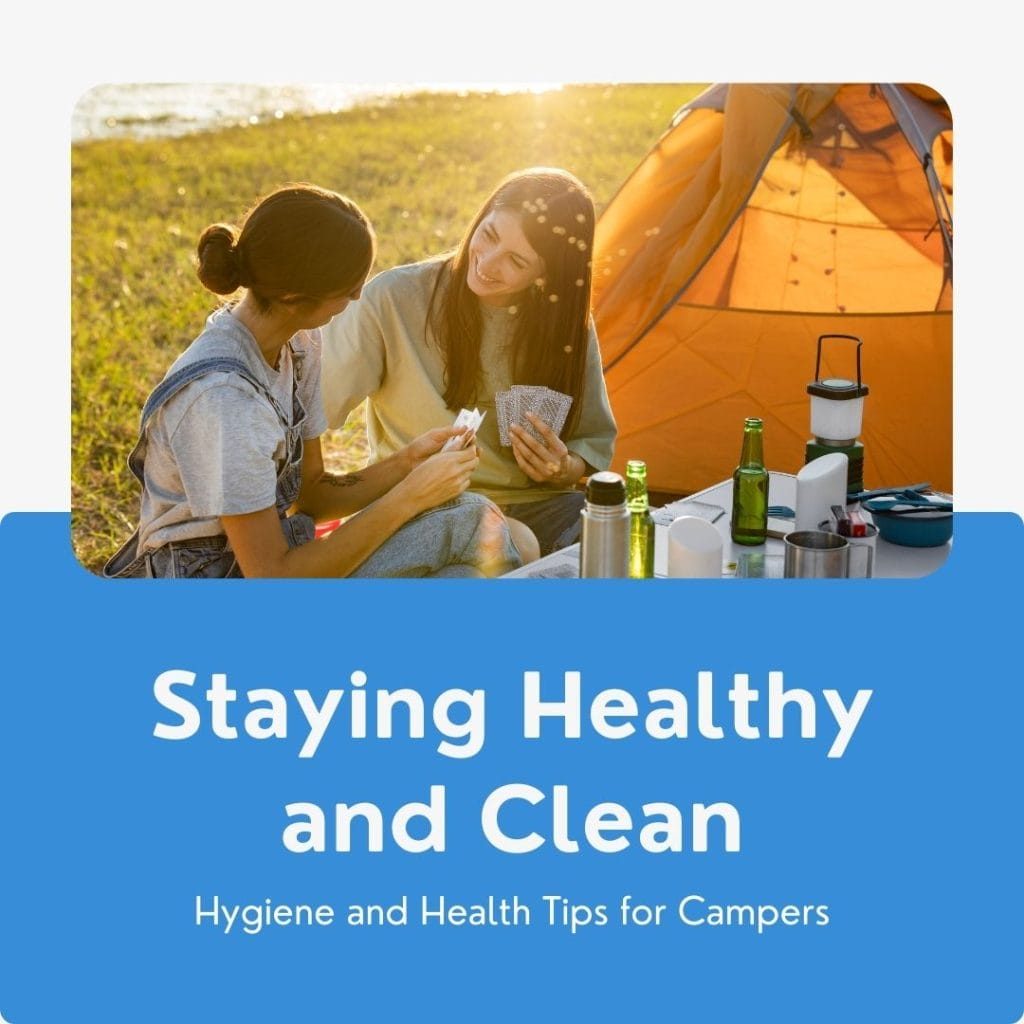Camping offers a chance to escape the hustle and bustle of daily life, to connect with nature, and embark on adventures that refresh the mind and spirit. However, amidst the excitement of exploring the great outdoors, it’s crucial not to overlook one fundamental aspect: hygiene and health. Whether you’re setting up a tent in a lush forest, beside a serene lake, or under the vast desert sky, maintaining good hygiene practices is essential for a safe and enjoyable experience.
So, prepare to embark on a journey of learning and discovery, where staying clean and healthy in the great outdoors is both an art and a science. Let’s ensure that our camping adventures are as hygienic and enjoyable as they are memorable!
Basic Hygiene Practices for Campers: Ensuring Health and Enjoyment in the Great Outdoors
Camping provides an opportunity to immerse oneself in the beauty of nature, but it also comes with the challenge of maintaining basic hygiene in a setting far removed from the comforts of home. While it may seem daunting, keeping clean in the wilderness is not only possible but essential for a healthy and enjoyable camping experience. This article will explore the necessity of basic hygiene in outdoor settings, provide practical tips for personal cleanliness, and discuss the importance of water conservation and hygiene.
The Necessity of Basic Hygiene in Outdoor Settings
Hygiene is often taken for granted in everyday life, but in the wilderness, it’s a crucial aspect that demands attention and planning. Poor hygiene practices while camping can lead to a range of problems, from unpleasant odors and discomfort to more serious concerns like infections and illnesses. In the confined spaces of campsites, these issues can quickly escalate, affecting not just one individual but the entire group.
The lack of facilities often associated with camping, such as running water or showers, doesn’t mean hygiene should be neglected. In fact, it’s in these environments that hygiene plays a pivotal role in ensuring a safe and pleasant camping experience. By maintaining cleanliness, campers can prevent the spread of bacteria and viruses, reduce the risk of skin and eye infections, and avoid attracting wildlife with scents associated with poor hygiene.
Tips for Maintaining Personal Cleanliness
- Hand Hygiene: Always carry hand sanitizer and use it before meals and after handling potentially contaminated items or surfaces. If available, use biodegradable soap and water for thorough handwashing.
- Body Wipes: In the absence of showers, body wipes can be a convenient way to freshen up. Opt for biodegradable wipes to minimize environmental impact.
- Oral Hygiene: Don’t neglect your teeth. A small, travel-sized toothbrush and toothpaste can keep your mouth fresh and prevent dental problems.
- Foot Care: After a long day of hiking, clean and air out your feet to prevent fungal infections. Pack extra socks to keep your feet dry.
- Clothing: Change clothes regularly, especially underwear and socks. Moisture-wicking fabrics are ideal for keeping the skin dry and reducing odor.
- Hair Care: If you have long hair, consider tying it up to keep it clean and manageable. Dry shampoos or bandanas can be helpful.
- Eco-friendly Products: Choose environmentally friendly personal care products. These are specially formulated to break down naturally without harming the environment.
Water Conservation and Hygiene
In many camping scenarios, especially in water-scarce environments, water conservation becomes a key concern. Here are some tips to maintain hygiene while conserving water:
- Use Water Wisely: Be mindful of your water usage. Use only what you need for cooking and cleaning.
- Biodegradable Soap: When using soap, choose biodegradable options and use sparingly. Avoid using soap directly in streams or lakes.
- Wash Stations: Set up a small wash station with a basin and a sponge. This method uses less water than a shower but can be effective for cleaning.
- Dry Cleaning Methods: Consider using a brush or cloth to dry clean clothes or gear, reducing the need for water.
- Waterless Products: Explore waterless hygiene products like no-rinse shampoos and body wipes, which are effective alternatives.
- Collect Rainwater: If possible, collect and use rainwater for non-drinking purposes like washing dishes or hands.
Maintaining basic hygiene while camping is not only essential for health and comfort but also for preserving the natural beauty of the outdoors. By adopting these practical tips and being mindful of our environmental impact, we can enjoy the wilderness responsibly and leave it as pristine as we found it.
Mosquito and Pest Control for Campers: A Guide to Staying Bite-Free in the Wild
Camping can be an enchanting experience, connecting us with the beauty of nature. However, it also exposes us to the less pleasant aspects of the great outdoors, notably mosquitoes and other pests. This article will delve into the importance of mosquito repellent in the wilderness, explore various repellent options, compare natural and chemical repellents, and discuss strategies tailored to different terrains.
Importance of Mosquito Repellent in the Wilderness
Mosquitoes are more than just a nuisance; they can be a serious health hazard. These pests are known carriers of diseases like malaria, West Nile virus, and Zika virus. In wilderness areas, where medical help might not be readily accessible, prevention becomes key. Using mosquito repellent is not just about comfort; it’s a critical measure to protect your health. Moreover, a bite-free experience allows you to enjoy your camping trip without the constant irritation and discomfort caused by mosquito bites.
Overview of Mosquito Repellent Options
When it comes to choosing a mosquito repellent, campers are faced with a plethora of options:
- DEET-Based Repellents: DEET has been the gold standard in mosquito repellents for decades. It’s known for its effectiveness and long-lasting protection.
- Picaridin Repellents: A newer alternative to DEET, picaridin is odorless, doesn’t feel greasy, and is less likely to irritate skin.
- Natural Oil-Based Repellents: Products containing oils like lemon eucalyptus, citronella, and tea tree oil offer a natural alternative, though they may need more frequent application.
- Permethrin-Treated Clothing: Permethrin can be used to treat clothing, offering another layer of protection against mosquitoes.
- Wearable Repellent Devices: These include bracelets and clip-ons that emit substances to deter mosquitoes.
- Spatial Repellents: Items like mosquito coils and thermacell devices create a mosquito-free zone in a small area.
Natural vs. Chemical Repellents and Their Effectiveness
The debate between natural and chemical repellents often centers on effectiveness versus safety and environmental impact. Chemical repellents, such as DEET and picaridin, are widely recognized for their superior effectiveness and longer duration of protection. However, some individuals may prefer natural options due to skin sensitivity or environmental concerns.
Natural repellents, while safer and eco-friendlier, generally provide shorter-term protection and may need to be reapplied more frequently. They are a viable option for those looking for a more organic solution, especially in areas with a lower risk of mosquito-borne diseases.
Strategies for Different Terrains
Different camping environments call for varied mosquito and pest control strategies:
- Wetlands and Lakesides: These areas are mosquito hotspots. Stronger repellents and protective clothing are advised.
- Forests and Mountains: While these areas might have fewer mosquitoes, ticks can be a concern. Use repellents effective against a broader range of pests.
- Desert Camping: Mosquitoes are less of a concern, but repellent is still advised during dusk and dawn when they are most active.
- Coastal Areas: Breezy conditions might reduce mosquito activity, but repellents are still essential, especially in the evenings.
- Backcountry Camping: Long-term protection is crucial. Consider using clothing treated with permethrin and a stronger DEET or picaridin-based repellent.
By understanding the importance of mosquito repellent and the various options available, campers can make informed decisions to protect themselves from pests. Whether opting for natural or chemical repellents, or employing different strategies based on the terrain, the goal is to enjoy the wilderness experience without the annoyance and risk of mosquito bites.
Sustainable and Eco-Friendly Hygiene Practices: A Guide for the Conscious Camper
In an era where environmental awareness is paramount, adopting sustainable and eco-friendly hygiene practices is more than a personal choice; it’s a responsibility. Whether you’re trekking through the mountains or camping by a serene lake, your hygiene habits can have a significant impact on the environment. This article focuses on promoting environmentally friendly hygiene products and providing tips for adhering to the ‘Leave No Trace’ principles, ensuring that our natural playgrounds remain unspoiled for future generations.
Emphasis on Environmentally Friendly Hygiene Products
The first step towards sustainable hygiene practices is choosing products that are kind to the environment:
- Biodegradable Soaps and Shampoos: These products break down naturally in the environment, reducing the risk of water contamination.
- Eco-Friendly Body Wipes: Opt for biodegradable wipes that decompose naturally, minimizing your ecological footprint.
- Organic and Natural Personal Care Products: Seek out products made with organic and natural ingredients, free from harmful chemicals.
- Reusable Hygiene Products: Consider using items like menstrual cups or washable cloths that can be reused, reducing waste.
- Packaging Matters: Choose products with minimal or recyclable packaging to lessen the impact on landfills.
Tips for Leaving No Trace and Protecting the Environment
Adhering to the ‘Leave No Trace’ principles is crucial while enjoying the outdoors:
- Dispose of Waste Properly: Pack out all your trash, including biodegradable products. Just because it’s biodegradable doesn’t mean it should be left in the wild.
- Minimize Campfire Impacts: Use existing fire rings or portable fire pits, burn all wood to ash, and put out fires completely.
- Respect Wildlife: Store food and trash securely to avoid attracting animals. Do not feed wildlife, as this can disrupt their natural foraging habits.
- Be Water-Wise: When washing yourself or dishes, do so at least 200 feet away from streams or lakes to prevent contamination. Use small amounts of biodegradable soap.
- Use Eco-Friendly Sunscreen and Insect Repellent: Protect yourself and the environment by choosing products that are free from harmful chemicals.
- Leave What You Find: Avoid disturbing plants, rocks, and natural artifacts. Take pictures, not souvenirs.
- Stay on Trails: Reduce soil erosion and plant damage by sticking to designated paths.
- Sanitation: If toilets are unavailable, dig a small hole (6-8 inches deep) at least 200 feet from water sources to bury human waste. Pack out used toilet paper.
- Energy Efficiency: Use rechargeable batteries and solar-powered devices to minimize battery disposal.
- Water Filtration: Instead of bottled water, use a water filter or purifying tablets for drinking water from natural sources.
By embracing these sustainable and eco-friendly hygiene practices, campers can significantly reduce their environmental impact. The key is to plan ahead, stay informed about eco-friendly products, and remain committed to preserving the natural beauty around us. Remember, every small step towards sustainability helps in making a big difference in protecting our planet.
Advanced Hygiene Strategies for Special Conditions: Keeping Clean Against the Odds
Camping and outdoor adventures often lead us into challenging environments where maintaining basic hygiene can become complex. From arid deserts to high-altitude mountains, these conditions demand advanced hygiene strategies. This article explores effective methods for addressing hygiene in tough environments and provides alternative solutions for maintaining cleanliness, ensuring that even in the most demanding settings, your well-being remains a priority.
Addressing Hygiene in Challenging Environments
Each challenging environment presents unique hygiene obstacles:
- Desert Conditions: Water scarcity is a significant concern. Use waterless cleaning products like no-rinse wipes and dry shampoos. Covering your skin with lightweight clothing can also reduce the need for frequent cleaning.
- High Altitude and Cold Climates: In these areas, water can be scarce or frozen. Use thermal insulation bottles to keep water in a liquid state. Opt for sponge baths with minimal water or biodegradable wet wipes.
- Tropical and Humid Climates: Excessive sweating and humidity can lead to skin irritation and fungal infections. Use moisture-wicking clothing and carry antifungal powders or creams.
- Backcountry and Remote Areas: Where facilities are non-existent, create a DIY hygiene kit with eco-friendly soap, a small towel, and a collapsible basin for sponge baths.
- Marine Environments: Saltwater can be harsh on the skin. Rinse with freshwater whenever possible and use moisturizers to prevent dryness.
Alternative Solutions for Maintaining Cleanliness
When traditional hygiene methods aren’t feasible, alternative solutions can be a game-changer:
- Portable Hygiene Devices: Compact, portable showers and bidets that can be attached to water bottles for a quick rinse.
- UV Water Purifiers: These devices can purify water from natural sources, making it safe for washing and hygiene purposes.
- Microfiber Towels: Lightweight and quick-drying, ideal for environments where carrying bulky towels isn’t practical.
- All-in-One Soap Bars: These bars can be used for hair, body, and even clothes, reducing the number of hygiene products needed.
- Hand Sanitizer Gel or Wipes: Crucial for keeping hands clean, especially before meals, when water is not available for washing.
- Baking Soda: A versatile product that can be used as a toothpaste, deodorant, and even for washing dishes.
- Cornstarch or Talcum Powder: Helps in absorbing excess moisture and keeping skin dry in humid conditions.
- Reusable Menstrual Products: For female campers, menstrual cups or washable cloth pads are more practical and environmentally friendly than traditional products.
- Clothing Choices: Opt for antimicrobial and moisture-wicking fabrics to reduce odor and the need for frequent washing.
- Wind and Solar Chargers: To keep electronic hygiene gadgets charged in remote areas.
By implementing these advanced hygiene strategies, campers and adventurers can maintain a level of cleanliness and comfort, even in the most challenging conditions. These solutions not only cater to personal hygiene needs but also embrace sustainability, ensuring that our adventures leave minimal impact on the natural world.
Debunking Misconceptions and Myths About Camping Hygiene: The Truths Every Camper Should Know
Camping is a beloved activity for many, but it’s often shrouded in myths and misconceptions, particularly when it comes to hygiene. Whether it’s about the effectiveness of eco-friendly products or beliefs surrounding mosquito repellents, these myths can deter or mislead even the most seasoned campers. This article aims to debunk common camping hygiene myths and clarify misconceptions, ensuring that you are well-informed for your next outdoor adventure.
Debunking Common Myths
- Myth: “Natural bodies of water are good for bathing.”
Truth: While it may seem appealing, bathing in lakes or rivers can contaminate the water with soaps and oils, harming aquatic life. Always bathe away from natural water sources and use biodegradable soap. - Myth: “You don’t need to wash your hands often when camping.”
Truth: Hand hygiene is crucial outdoors, especially before meals and after using the restroom. Hand sanitizer or biodegradable soap and water should be used regularly. - Myth: “Wild animals are attracted to eco-friendly products.”
Truth: While animals may be attracted to strong scents, eco-friendly products are generally less fragrant and, therefore, less likely to attract wildlife than traditional products. - Myth: “It’s impossible to maintain good dental hygiene while camping.”
Truth: Good oral hygiene is entirely feasible with a travel-sized toothbrush and toothpaste or even baking soda. - Myth: “If you’re camping in a cold environment, you don’t sweat and don’t need to bathe.”
Truth: Regardless of the temperature, your body still produces sweat and oils. Regular cleaning is important to prevent skin irritation and infections.
Clarifying Misconceptions About Eco-Friendly Products
- Misconception: “Eco-friendly hygiene products are not as effective.”
Truth: Many eco-friendly products are just as effective as their traditional counterparts. They are designed to be gentle on the environment without compromising on effectiveness. - Misconception: “Biodegradable soaps can be used directly in rivers and lakes.”
Truth: Even biodegradable soaps can harm aquatic ecosystems. Always use them at least 200 feet away from natural water sources.
Clarifying Misconceptions About Mosquito Repellents
- Misconception: “All mosquito repellents are harmful to the environment.”
Truth: There are environmentally friendly repellents available that are effective without being harmful to the ecosystem. - Misconception: “Natural mosquito repellents don’t work.”
Truth: Some natural repellents, like oil of lemon eucalyptus, are quite effective. However, they may need more frequent application than DEET-based products. - Misconception: “You only need mosquito repellent in the evening.”
Truth: Mosquitoes can be active at any time, especially in wooded or wet areas. It’s important to use repellent throughout the day.
By debunking these myths and clarifying misconceptions, campers can be more confident and better prepared in managing hygiene effectively while outdoors. Understanding the truth behind these common beliefs ensures a safer, more enjoyable, and environmentally responsible camping experience.
Conclusion
Embarking on a camping adventure brings us closer to nature and offers a unique blend of challenges and rewards. Among these challenges, maintaining good hygiene and health is paramount. Throughout this guide, “Staying Healthy and Clean: Hygiene and Health Tips for Campers,” we’ve explored various facets of camping hygiene, from basic practices to tackling pests, embracing eco-friendly solutions, adapting to special conditions, and debunking common myths.
The key takeaway is that being well-prepared and informed is crucial. By implementing the tips and strategies discussed, you can ensure that your camping experiences are not just enjoyable but also safe and respectful to the environment. Remember, good hygiene practices are not just about personal comfort; they play a critical role in preserving our health and the natural beauty of our outdoor settings.
We encourage you to delve deeper into the specific areas of interest through the linked child articles, which provide more detailed insights and advice. Whether you’re a seasoned camper or new to the experience, these resources will equip you with the knowledge to navigate the challenges of outdoor hygiene with confidence and care.
So, as you pack your bags for your next camping trip, take these hygiene and health tips along. They will not only enhance your camping experience but also ensure that the trails, forests, and mountains remain pristine for others to enjoy. Happy camping, and stay healthy and clean!


